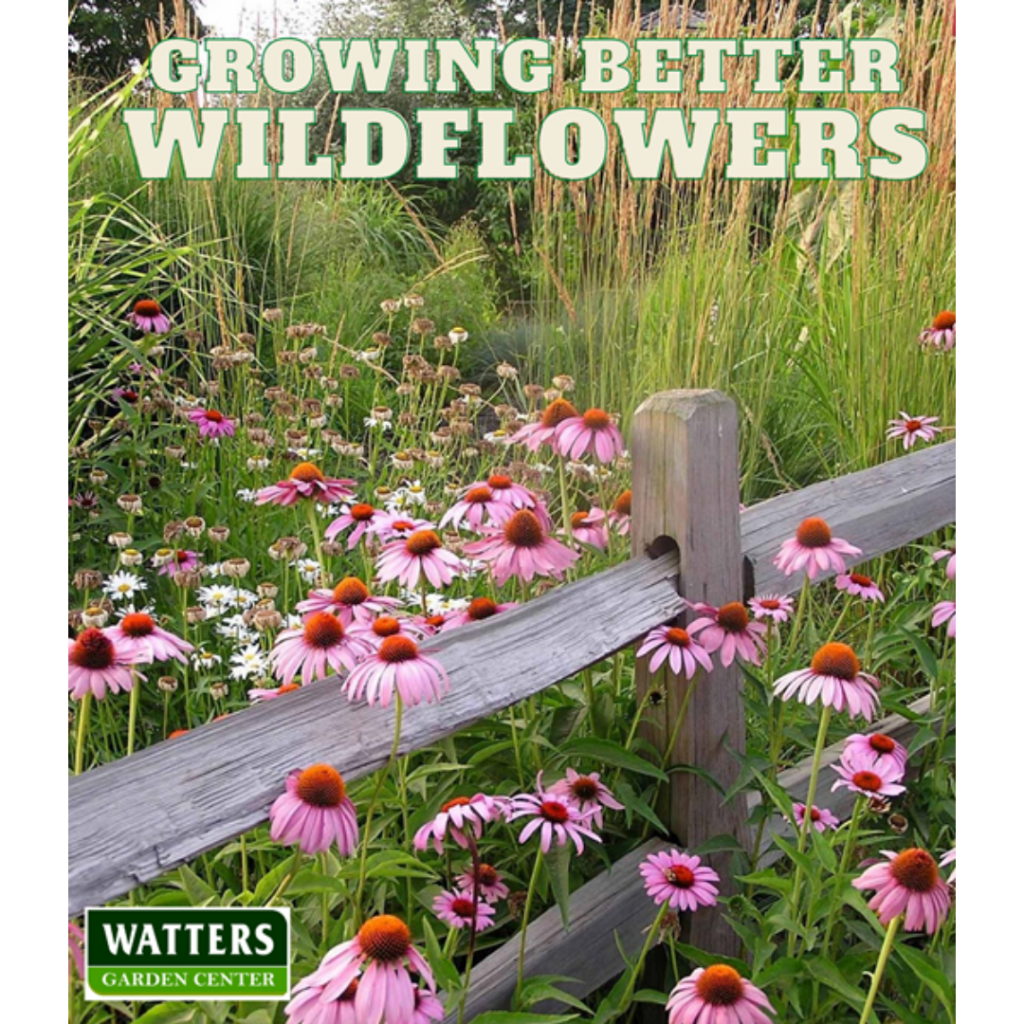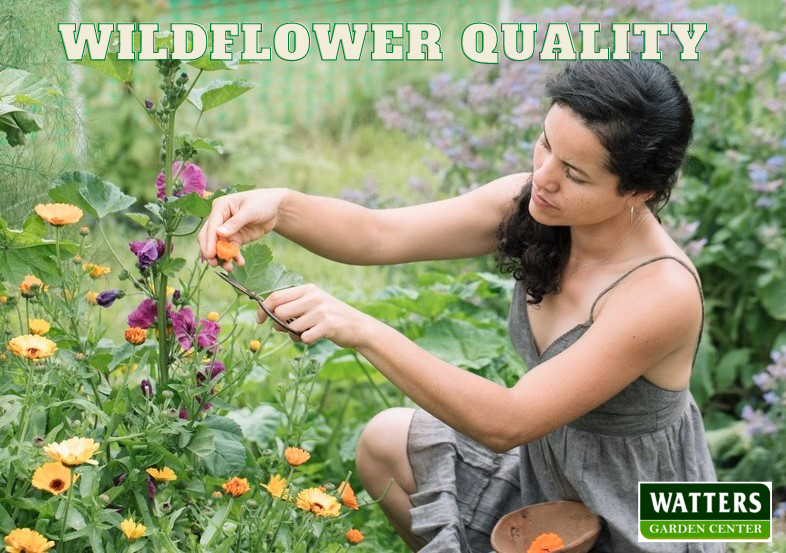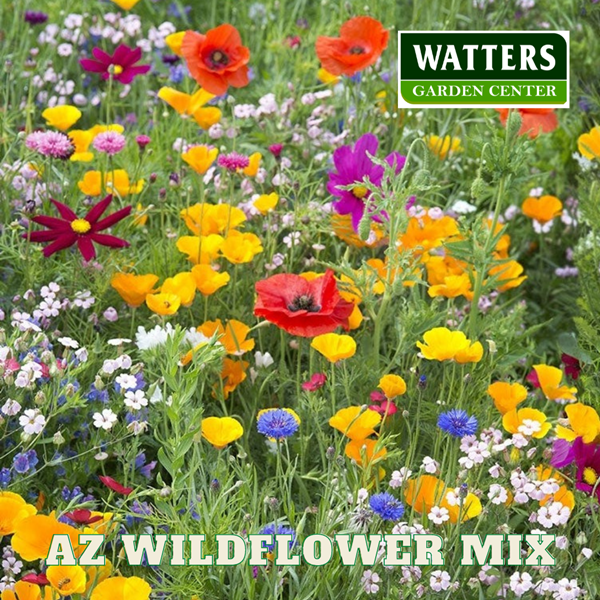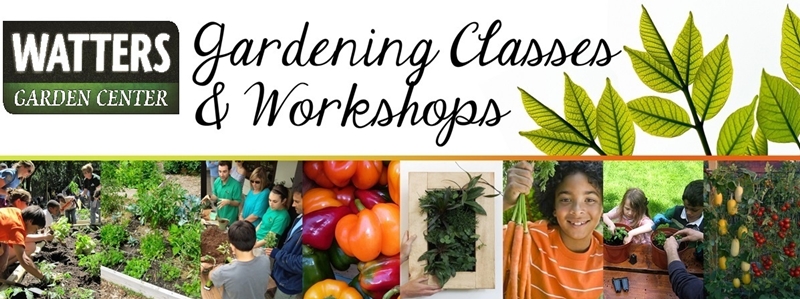by Ken Lain, the mountain gardener


On the Go Answer – Readers Digest-type Condensed Version of this Article
- Wildflowers are best planted in winter
- Most flowers prefer at least 6 six hours of sun per day
- Hydro-mulch – blend wildflower seed in Watters Premium Mulch and spread
- Keep seedbed moist
- Plant only perennial wildflower seeds that come back each year
- Watters Parade of Poppies mix is the most popular blend of all.
This is the ideal month to start a new wildflower garden in 2022.
Few plants in the garden deliver a natural appearance than wildflowers. Although true success with wildflowers depends on timing, adhere to these simple tips, tricks, and techniques, and you can paint a swathe of color across your springtime landscape.
A pure wildflower seed needs the freeze-thaw cycle of late winter and early spring to germinate properly. This is especially true for the most popular Poppy varieties. Cold weather cracks open a wildflower hull, so they better seed into your garden soil. That is why sowing your wild garden now through March is the ideal planting window.
Good seed to soil contact is essential to achieve a bright wildflower garden. There are seemingly weightless wildflower seeds, as light as feathers designed to float. These are a challenge to get down into the soil. Casually scattering seeds on the unprepared ground bring disappointing results. A bit of work and patience is essential to a successful show of spring blooms.
Four simple steps make the difference in wildflower success. Here are the specific planting techniques that guarantee a breathtaking crop of wildflowers:
#1 – Select & Prepare the Best Garden Site. Most wildflowers need a considerable amount of sunshine so choose a location that receives at least six hours of light daily. Planting in weed-free soil assures optimal results, so pull out anything you don’t want growing with your wildflowers. Then rake the seedbed to loosen the top 1-2″ inches of soil. Better growth occurs when 7-4-4 ‘All Purpose Plant Food’ is mixed into the topsoil. This slow-release plant food provides the specific nutrient needed during the germination and growing seasons.
#2 – Create a Wildflower Hydro Mulch. Often seeds in a mix are so tiny a gardener can barely tell when they land on the soil. Avoid this drawback and buy a bag of Watters Premium Mulch, pour it into a wheelbarrow, and mix in your seed. Spread this seed-mulch blend over the prepared seedbed. A simple trick so you know precisely where each wildflower grows. It ensures good seed-to-soil contact, insulates your seedling, and camouflages them from hungry birds.
#3 – Keep the seedbed moist. If sufficient moisture is present, some seeds can germinate by the end of February. Your wildflowers require supplemental water without enough rain to keep the seedbed moist regardless of planting location. Even better, good snow over your wild garden maximizes germination.

Wildflower Caution! Quality is difficult to spot in wildflower seeds and presents a problem because many shortcuts are taken in the industry. Many blends of wildflower seeds are composed of fillers and cheap annual seeds to keep the cost down. You want high-quality flowers that come back for years of enjoyment. A quality seed spreads blooming joy throughout the gardens.

Arizona Wildflower Blend is my favorite easy-to-grow wildflower. It contains seeds for Indian paintbrush, California poppy, penstemon, columbine, and Arizona lupine, to name a few. This low water, high show mix is a sure success.
Parade of Poppies is the most popular blend of all. Far more than ordinary California poppy, this mix comprises seven different poppy flowers. A spectacular spring show pulsates a cornucopia of colors with flowers of all sizes.
Drought Tolerant Mix is for the zero care gardens so tough it dressed up commercial and investment properties. Deer Resistant Wildflowers is designed for homes next to the forest and the ever-presence of deer. Watters Pollinator Wildflower Mix draws bees back into a garden to help pollinate fruit trees and vegetables.
Ask for my free handout, ‘Growing Better Wildflowers.’ This step-by-step guide helps grow the perfect spring wildflower patch.

2022 Free Gardening Classes every Saturday @ 9:30 am
Spring classes and instructors are finalized, and the rest of the Spring schedule is completed. Here are the topics for the following three garden classes this spring.
January 29 – Why January is the Month to Plant Wildflowers
February 5 – Winter Soil Preparation for Growing Success
February 12 – Mountain Fruit Trees and the Heavy Harvest
Until next week, I’ll be helping local gardeners plant better wildflowers here at Watters Garden Center.
Ken Lain can be found at Watters Garden Center throughout the week, 1815 Iron Springs Rd in Prescott, or contacted through his website at WattersGardenCenter.com or Top10Flowers.com.

